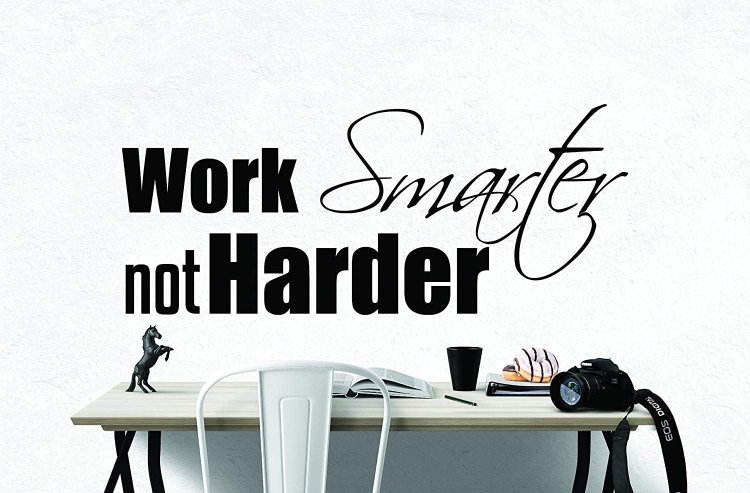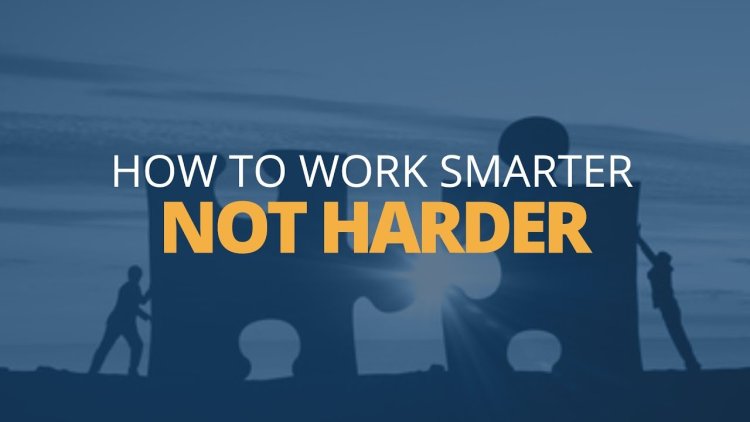The Art of Strategic Laziness: Working Smarter, Not Harder

The idea of strategic laziness may not make sense in a world that often praises the "hustle culture" and the idea of working hard to achieve goals. To be clear, strategic laziness is not about avoiding work totally. Instead, it's about being as efficient and productive as possible by focusing on the tasks that really matter. You need to work smarter, not harder.
Think about Tim Ferriss's life. He is the best-selling author of "The 4-Hour Workweek." Ferriss is known for supporting the ideas of strategic laziness, which stress the significance of setting priorities, delegating tasks, and automating tasks in order to get the most done with the least amount of work. Many people have been moved by his unconventional approach to work and life to rethink how they relate to productivity and adopt a more strategic way of reaching their goals.
But what is strategic laziness exactly, and how can it help people and businesses? Let's take a closer look at this idea and find out how working smarter, not harder, can help you be more successful and happy.
What Strategic Laziness Is All About?
Being smart with your time and energy is what strategic laziness is all about. It means figuring out which tasks will have the biggest effect on your goals and putting all of your energy into those, while outsourcing or getting rid of tasks that aren't necessary. Strategic laziness is not the same as putting things off or being lazy in the usual sense. Instead, it's about making the best use of your resources to get the best results.
Here are some important rules of deliberate laziness:
- Setting priorities: The first step in strategic laziness is to figure out what your top priorities are and then focus on tasks that help you reach your overall goals. You can make sure you're focusing your energy on tasks that will move the needle forward by putting tasks in order of how important they are and how they might affect other people.
- Delegation: Know that you do not need to do everything by yourself. Give tasks that can be done more quickly and easily to other people. This could mean outsourcing administrative work, hiring experts for specific tasks, or giving team members more freedom to do their own thing. By delegating, you can make time for things that need your specific skills and knowledge.
- Automation: Use technology to make boring jobs easier to do and speed up your work. Scheduling social media posts, automating email responses, or using project management tools to plan team tasks are all examples of ways that automation can save you a lot of time and effort. This frees you up to work on more important projects.

Here are some examples of strategic laziness in action:
- Elon Musk's Approach to Innovation: Elon Musk, the CEO of SpaceX and Tesla and a visionary leader, is known for always working toward big goals. Musk, on the other hand, enjoys strategic laziness by focusing on big projects and giving work to trusted teams. Musk, for instance, gives day-to-day tasks to other people at SpaceX and Tesla so that he can focus on long-term planning and new ideas.
- Warren Buffett's Investment Strategy: Warren Buffett, who is one of the best investors of all time, invests in high-quality companies with long-term economic advantages. This is a form of strategic laziness that he uses. Buffett doesn't try to time the market or follow market trends all the time. Instead, he is disciplined in his investing, which lets him get steady long-term returns with little work.
- Google’s 20% Time:Famously, Google set up a policy called "20% time," which lets workers spend one-fifth of their workweek working on projects that aren't related to their main duties. This method not only supports new ideas and creativity, but it also promotes strategic laziness by letting workers focus on projects that match their skills and interests.
CONCLUSION
Strategic laziness is a new way to think about how to be successful in a world that often links being busy with being productive. People and companies can make the most of their resources and get more done with less work by setting priorities, delegating tasks, and automating them. Strategic laziness isn't about avoiding work or taking shortcuts; it's about working better, not harder, to find a more satisfying and long-lasting way to succeed. When you feel like you have too many things to do, take a step back and ask yourself, "How can I use the principles of strategic laziness to get my work done faster?"
What's Your Reaction?


















